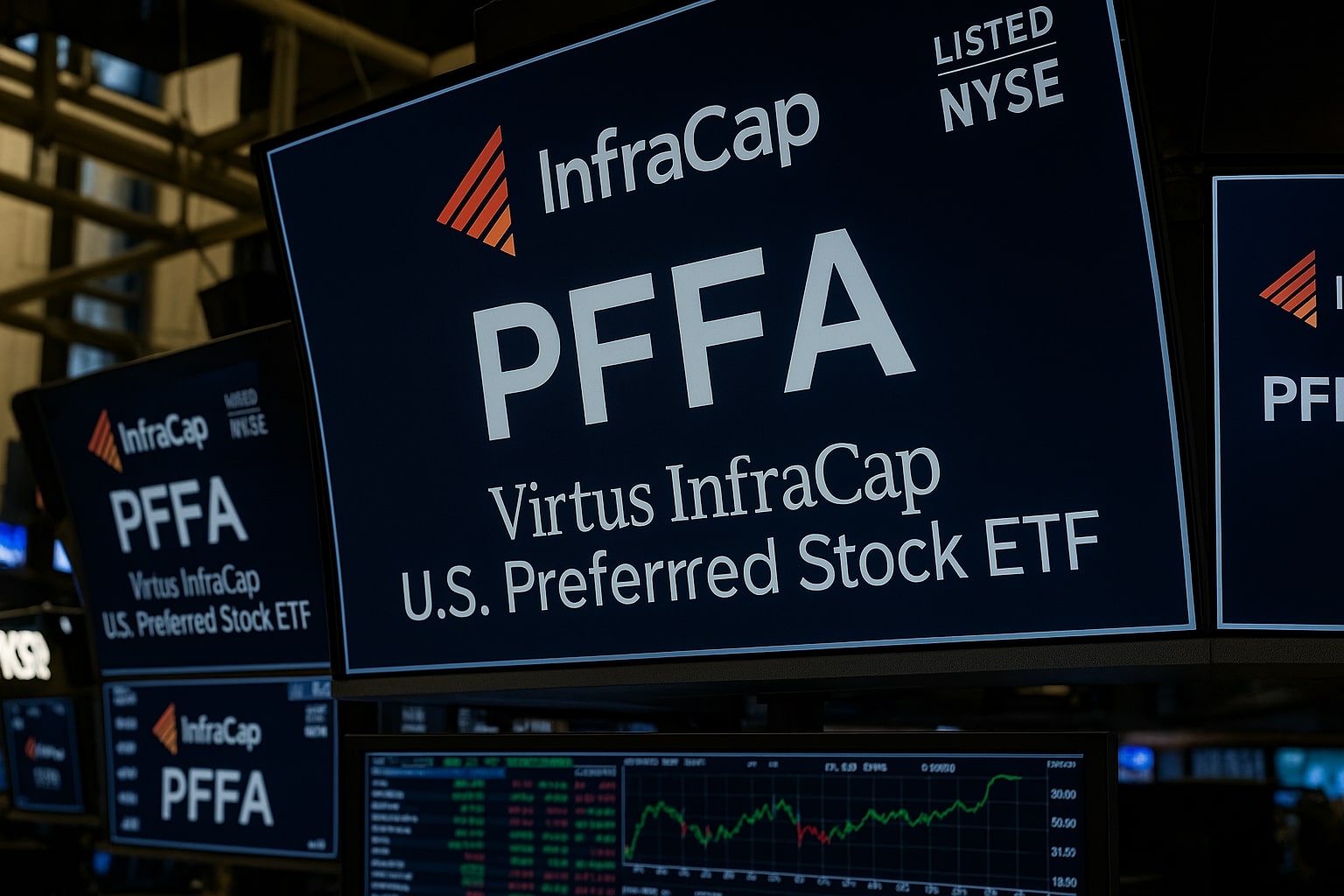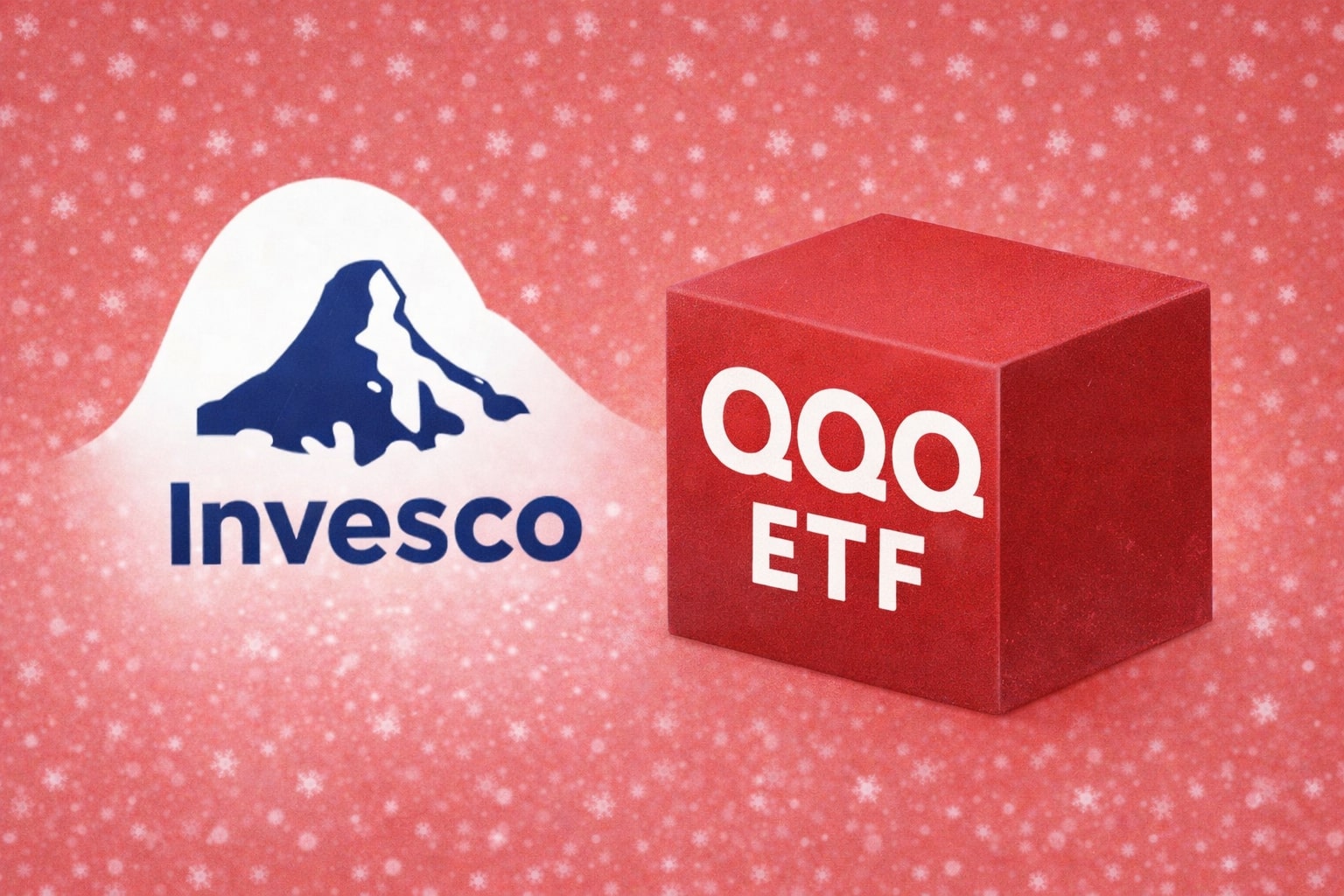
Virtus PFFA ETF: 9.05% Yield at $22.43 with Strong Sector Allocation and Income Stability
With $1.89B assets under management, monthly payouts, and a 5-year return of 11.58%, PFFA combines leverage and active management to outperform peers in the preferred stock arena | That's TradingNEWS
PFFA ETF Trading Performance and Market Context
Virtus InfraCap U.S. Preferred Stock ETF (NYSEARCA:PFFA) closed at $22.43 on September 19, 2025, inching up 0.04% during the regular session, before slipping to $22.40 after hours. The ETF has been oscillating within a 52-week range of $19.20 to $23.24, reflecting both resilience and volatility in the preferred stock space. Year-to-date, PFFA delivered a 9.16% total return, significantly above the 4.21% average of its category, while its one-year return of 7.16% also outpaces peers at 5.34%. Over a three-year horizon, PFFA returned 12.55%, double the sector average of 6.13%. These numbers highlight that active management combined with leverage has given PFFA a competitive edge, especially for investors prioritizing yield.
Income Generation and Dividend Stability
At its core, PFFA is designed for income, currently offering an annual dividend rate of $2.03 per share, translating to a 9.05% yield. Distributions are made monthly and have held steady between $0.16 and $0.17 per month over the last year. That consistency is noteworthy, as many high-yield funds often experience cuts when market conditions turn adverse. Even in 2022, when PFFA saw a sharp -20.88% decline in NAV, payouts continued uninterrupted, showing management’s commitment to maintaining cash flow. Over the last five years, PFFA’s 11.58% annualized return demonstrates that even when capital appreciation lags the S&P 500, income generation provides a cushion that compounds over time. For retirees and income-focused portfolios, this monthly stability is a key advantage over traditional equity ETFs.
Sector Allocation and Portfolio Composition
The ETF’s $1.89 billion in assets under management are spread across 202 holdings, ensuring diversification while still concentrating on sectors that deliver robust cash flows. Financials account for 28.82%, real estate 19.71%, and mortgage REITs another 19.54%. Industrials sit at 9.89%, utilities at 7.19%, communications at 5.59%, and pipelines at 2.38%, with minor exposures to technology, transport, materials, and consumer discretionary. The top holdings include SCE Trust, Flagstar Financial, Energy Transfer LP, and Banc of California, together making up nearly 11% of the portfolio. Importantly, no single holding exceeds 4%, which mitigates concentration risk. The ETF also uses derivatives strategically, reflecting an actively managed style rather than passively replicating an index. This allocation underscores the manager’s focus on higher-yield preferreds in industries with resilient cash flow profiles, even if some positions remain unrated by agencies.
Leverage and Risk-Return Dynamics
One of the defining characteristics of PFFA is its 22.5% use of leverage, a double-edged sword that enhances yield but magnifies volatility. This was most visible during the COVID-19 crash, when PFFA fell more sharply than non-leveraged peers like iShares Preferred & Income Securities ETF (PFF). However, PFFA’s rebound was swift, with total return outperformance over the recovery phase. By comparison, PFF’s yield remains near 5–6%, while PFFA consistently stays in the 9% range due to its leveraged approach. The ETF’s beta of 1.44 reflects this higher sensitivity to market swings, making it suitable for investors who can tolerate short-term volatility in exchange for superior long-term cash flows.
Credit Quality and Default Risk Exposure
PFFA’s income engine comes from holding a high proportion of lower-rated or unrated preferreds. Nearly 10% of holdings are BBB, about 20% BB, 15% B, and roughly 45% are below B or unrated. While this allocation may raise eyebrows for conservative investors, historical performance shows that defaults within these holdings have remained low, even through stressed periods like the pandemic. Many of these unrated securities belong to smaller REITs, energy partnerships, and niche financials, where ratings agencies simply don’t cover the issues. By actively managing credit exposure, the ETF sidesteps the rigidity of index-based strategies, allowing management to seize yield opportunities others ignore.
Distribution Track Record and Growth Patterns
From 2019 through 2025, PFFA has consistently delivered payouts, even as market environments shifted from zero interest rate policies to sharp Federal Reserve hikes and now an easing trajectory. The ETF paid 31.97% in total returns in 2019, 23.52% in 2021, and 26.49% in 2023. The main setback came in 2022, when rising rates drove preferred valuations lower and NAV fell sharply by -20.88%. However, distributions remained stable, and the recovery in 2023 underscored management’s ability to adapt. With the current macro backdrop pointing toward additional Fed cuts after weaker labor data, PFFA’s fixed-rate and fixed-to-floating preferreds could see capital appreciation, while pure floating-rate positions may lose some yield support.
Read More
-
QQQ ETF At $626: AI-Heavy Nasdaq-100 Faces CPI And Yield Shock Test
11.01.2026 · TradingNEWS ArchiveStocks
-
Bitcoin ETF Flows Flip Red: $681M Weekly Outflows as BTC-USD Stalls Near $90K
11.01.2026 · TradingNEWS ArchiveCrypto
-
Natural Gas Price Forecast - NG=F Near $3.33: NG=F Sinks as Supply Surges and China Cools LNG Demand
11.01.2026 · TradingNEWS ArchiveCommodities
-
USD/JPY Price Forecast - Dollar Breaks Toward ¥158 as Yen Outflows and US Data Fuel Dollar Charge
11.01.2026 · TradingNEWS ArchiveForex
Expense Structure and Cost Considerations
The ETF charges an expense ratio of 2.52%, which is high compared to passive preferred ETFs like PFF or PGX, which charge under 0.50%. Yet, investors continue to allocate to PFFA because the active strategy consistently justifies the cost. By identifying mispriced opportunities in smaller or unrated preferreds, management has generated yields and performance spreads that outweigh the fee. The fact that PFFA has outperformed its category over one-year, three-year, and five-year periods despite higher costs suggests value-add from active oversight.
Performance vs. Benchmarks and Peers
Comparing PFFA’s trajectory since inception in 2018, it has returned 76.83% in total performance, while the S&P 500 delivered 173% in the same period. This underperformance is intentional—PFFA is not designed to chase equity-like appreciation but to deliver sustainable income. Against its preferred stock ETF peers, however, PFFA has dominated. Its YTD return of 9.16% vs. 4.21% category average, and 5-year 11.58% vs. 3.52% category average, show consistent alpha. Investors seeking monthly income distributions at 9%+ would find that PFFA has managed to combine equity-like returns in strong years with bond-like payouts in weak ones.
Macroeconomic Outlook and Rate Sensitivity
The ETF’s near-term trajectory hinges on Federal Reserve policy. With inflation cooling and recent jobs data disappointing, rate cuts are likely to accelerate. On one hand, this reduces borrowing costs for PFFA’s leveraged structure, improving net income spreads. On the other, lower rates will compress yields on floating-rate preferreds, which represented over 32% of the portfolio (23.4% fixed-to-floating and 13.4% floating at last count). Still, fixed-rate preferreds and capital appreciation potential could offset income compression. Historically, preferreds benefit in lower-rate environments as spreads tighten, lifting valuations across the sector.
Final Assessment: Buy, Sell, or Hold
With shares at $22.43, a 9.05% yield, $1.89 billion AUM, and monthly payouts holding steady at $0.16–0.17, PFFA remains one of the most attractive income-oriented ETFs available. Its 22.5% leverage magnifies both risk and reward, but historical evidence shows that management has navigated crises effectively. Compared to peers, it continues to deliver higher returns, broader sector exposure, and stable distributions, albeit at the cost of higher volatility and a 2.52% expense ratio. For income-focused investors who can tolerate short-term price swings, PFFA is a Buy, offering a compelling mix of yield and recovery potential as rates decline.


















